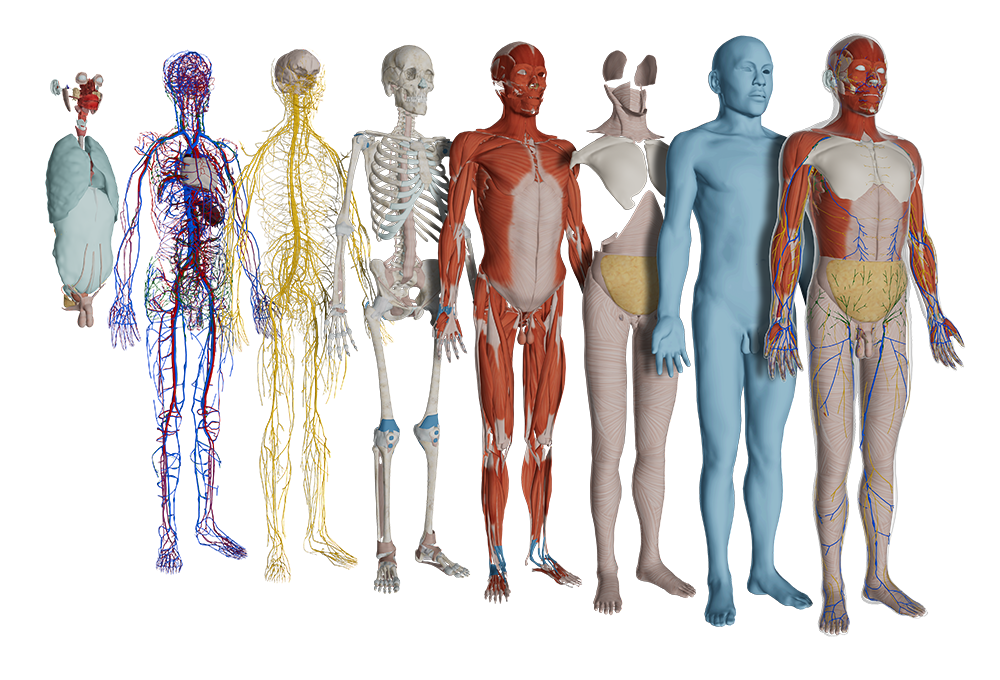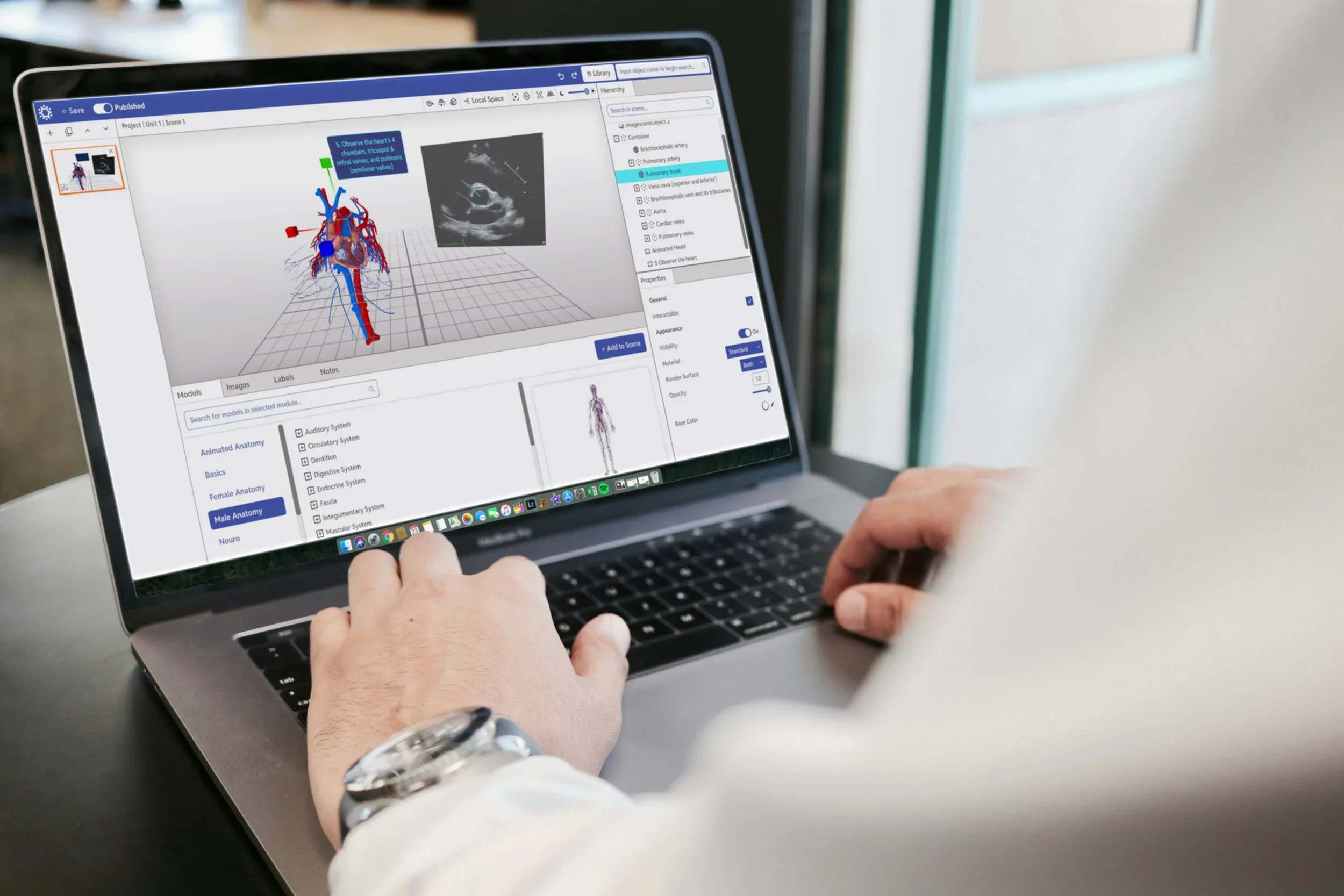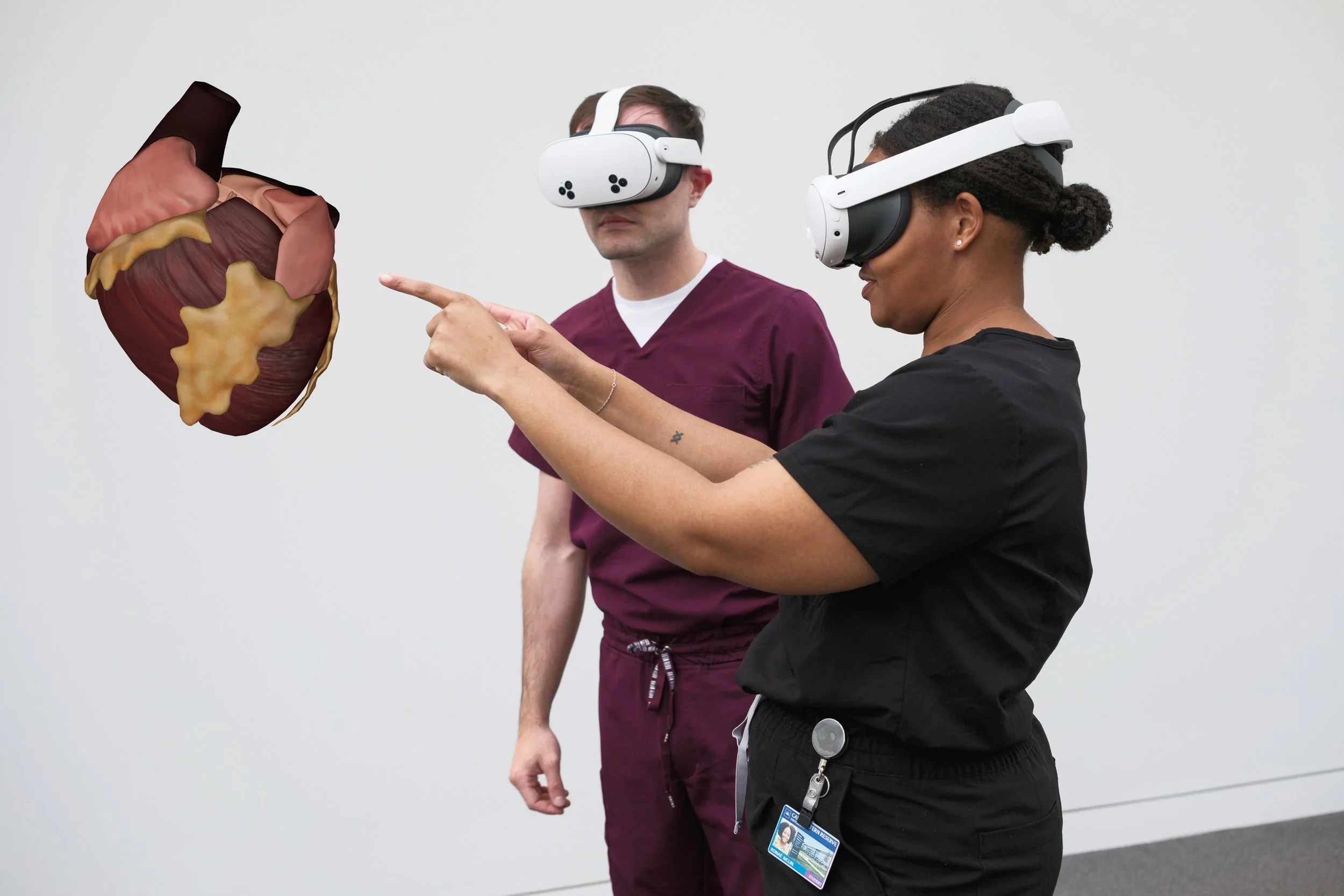Prepare PA Students for Clinical Decision-Making with Immersive 3D Anatomy
Equip future physician assistants with spatial clarity, procedural confidence, and clinical context before they enter patient care.
Why Anatomy Matters to Physician Assistants
In PA education, anatomy is applied quickly. It’s the framework for differential diagnosis, procedural safety, and confident patient assessment. Students must rapidly connect structure, function, and clinical presentation, especially when moving quickly into rotations.
Perform procedures with confidence during clinical skills labs and rotations
Quickly translate anatomical knowledge into differential decision-making
Strengthen understanding of surface anatomy, landmarks, and clinical correlations
Traditional methods often leave students struggling to visualize complexity.
Origin Story:
Case Western Reserve University
Case Western Reserve University’s School of Medicine pioneered HoloAnatomy® to reimagine how anatomy is taught. Today, PA programs use HoloAnatomy® to give students an early grasp of anatomy in clinical context, ensuring they don’t just memorize but also apply anatomy in patient-facing scenarios.
Guided exploration of life-sized 3D anatomy before dissection lab
Interactive, team-based learning with structures visible from every angle
Higher engagement, improved spatial understanding, and stronger retention
Evidence-Based Impact
Grounded in peer-reviewed research and trusted by leading institutions worldwide, HoloAnatomy® demonstrates measurable improvements in anatomy learning:
Cut study time by up to one-third: Ideal for accelerated PA curricula where students must master anatomy quickly before entering skills labs and rotations
Improve retention by up to 40%: Supports long-term recall needed for PANCE performance and clinical decision-making under pressure
Boost engagement & student motivation: Increases participation in anatomy labs and case-based clinical learning sessions
Tailored to your curriculum
-

Give students clarity across every system
Adaptable for skills check-offs, case-based learning, and pre-rotation clinical prep, HoloAnatomy® gives PA students clarity across every system with expert-crafted models covering 15 male and female systems. HoloAnatomy® Neuro provides the world’s most detailed 3D neuroanatomy visualizations
-

Customize lessons with Hub
From their desktop, instructors use Hub to plan sessions, integrate 3D models, images, or multimedia, and align everything seamlessly with their curriculum.
-

Engage students in collaborative XR learning
With Meta Quest 3 or Microsoft HoloLens, students explore anatomy at human scale, interact dynamically with structures, and collaborate with peers in real time. Learning anatomy feels like a clinical team exercise vs a memorization task.
Why PA Educators Choose HoloAnatomy .NEXT
Rotation-ready learning: Bridges didactic content with clinical scenarios
Supports PA competencies: Aligns with ARC-PA expectations around anatomy integration
Improves procedural confidence: Helps students visualize injection sites, landmarks, and internal relationships
Enhances team-based case learning: Supports collaborative diagnostic sessions and simulation lab prep
Book a quick demonstration to see how PA programs are using HoloAnatomy® .NEXT™ to improve exam performance, procedural readiness, and student clinical confidence.
Ready to reimagine anatomy education for your PA program?
-
HoloAnatomy is an award-winning 3D digital anatomy platform, originally developed at Case Western Reserve University’s School of Medicine. Built for mixed reality learning, it lets students and educators explore highly detailed, interactive holograms of the human body. By integrating clarity-focused 3D models with curriculum-aligned lessons, HoloAnatomy delivers a scalable, accessible alternative to cadaver dissection—designed to improve comprehension, retention, and engagement.
-
Using the Hub 3D anatomy app, instructors create customized lessons, labs, or case-based sessions that align directly with their curriculum. Learners then use XR devices (e.g., Meta Quest 3) to project life-sized anatomy into their real environment. They can walk around a holographic cadaver, zoom into organs, isolate systems, and reveal internal structures with exceptional clarity. This seamless, integrated approach functions like a virtual anatomy lab, supporting flexible teaching formats and driving better learning outcomes.
-
HoloAnatomy features over 7,000 meticulously crafted, color-enhanced 3D anatomy illustrations spanning 15 complete systems of the male and female human body. Developed with medical experts, the library enables exploration by system, region, organ, or custom combinations, offering comprehensive anatomical visibility for both foundational and advanced study.


